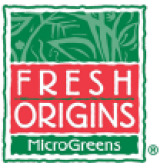


Thyme Blossoms
Estimated Inventory, 50 ct : 3.00
This item was last sold on : 07/17/25
| Fresh Origins | Homepage |
Description/Taste
Fresh Origins Thyme blossoms are very small in size, measuring approximately 5 to 8 millimeters in diameter. The flowers are attached to branched, woody stems with small leaves, only measuring a few millimeters, growing in clustered pairs at intervals along the stems. The flowers bloom along the stem, nestled in amongst the leaves, and boast varying purple, pink, and white hues. Thyme blossoms offer a balsamic scent and a piney, citrusy flavor with hints of mint.
Seasons/Availability
Fresh Origins Thyme Blossoms are available May through July, and for a short season in December.
Current Facts
Fresh Origins Thyme Blossoms are the flowering sprigs of an herbaceous bushes in the Thymus genius. Thyme is a member of the Lamiaceae family and is closely related to oregano, lavender, and marjoram. There are 300 different varieties of thyme that display small blooms in varying hues of white, light pink, and purple. Thyme has been widely used for millennia as a culinary ingredient, fragrance, and for medicinal purposes. Unlike other herbs, the leaves retain their flavor and aroma when the plant blooms, allowing the entire sprig to be utilized. The Thyme Blossoms in the photograph above were grown by Fresh Origins farm located in Northern San Diego, California. Fresh Origins is the leading producer of microgreens and edible flowers in the United States.
Nutritional Value
Thyme Blossoms contain significant amounts of vitamins A and B-complex, as well as minerals like calcium, potassium and magnesium. The mature tops of Flowering thyme contain an essential oil consisting primarily of natural compounds thymol and carvacrol, which give the leaves and blossoms of Flowering thyme their aroma and taste. The herb also contains tannins, bitter compounds, and organic acids, which together with thymol and carvacrol offer digestive benefits, as well as antibiotic, antibacterial and antioxidant properties. Overall, ingesting thyme is believed to be ideal for maintaining good health.
Applications
Fresh Origins Thyme blossoms can be used as an alternative to the herb's leaves for a milder flavor and more delicate texture. They should be used fresh, steeped in tea, or as a garnish rather than being cooked. When incorporated into tea, these blossoms pair well with flavors like lavender, mint, and chamomile. As a garnish, they are ideal as a topping for roasted meats, grilled vegetables, and salads. Fresh Origins Thyme blossoms are frequently tossed into salads with fruity ingredients like lemons, oranges, grapefruit, apples, pears, and berries, as well as vegetables such as beets, carrots, arugula, and spinach. These flowers can be added on top of grain bowls, stir-fries, cold soups, and charcuterie boards. Thyme blossoms may be infused into butter and oils for use in baked goods like bread and cookies. They pair well with the flavors of goat and feta cheese, parmesan, basil, almonds, walnuts, pine nuts, pesto, grilled lamb and pork, white beans, garlic, onions, potatoes, tomatoes, anchovies, olive oil, honey, and rosemary. Fresh Origins Thyme blossoms should be refrigerated for best quality and will keep up to 7 days when stored in an airtight container.
Ethnic/Cultural Info
Thyme has long been regarded as a symbol of courage and bravery. Roman soldiers would often wear a sprig of thyme on their uniforms, given to them by fellow soldiers or by a beloved to inspire courage in battle. In Europe, Knights would prepare for battle by bathing in thyme and marjoram, believing the strong scents from the herbs would inspire bravery when they needed it the most. This lore followed the herb north from Rome to Scotland where the herb was adopted as the plant badge of the Armstrong Clan, a clan renowned for its strength, size, and bravery. In the Scottish Highlands, clans would use plant badges to identify themselves in battle. The plant chosen for the badge was symbolic of the clan’s homeland and was believed to bring luck and protection to the warrior and the land itself.
Geography/History
Thyme is native to the Levan region of the Mediterranean where it has grown wild for thousands of years. The hearty herb thrives in rocky or sandy soils with good drainage and is drought tolerant. The Thyme blossoms in the photo above were grown by Fresh Origins, a farm located in San Diego, California. Fresh Origins uses the mild, Southern California climate to grow their extensive catalog of microgreens™, edible flowers, and tiny veggies™. Fresh Origins farm was established in 1995 and has become the culinary industry’s leading producer of microgreens, petite greens, and edible flowers. The farm closely partners with chefs to create innovative varieties with unique flavors, and they also work closely with third party auditing programs to ensure the highest level of food safety at their farm and production areas. Today Tiny Veggies™ White Turnips can be found through select distribution partners of Fresh Origins across the United States and Canada, including Specialty Produce.
Featured Restaurants
Restaurants currently purchasing this product as an ingredient for their menu.
| Saiko Sushi-Coronado | Coronado CA | 619-435-0868 |
| Born & Raised | San Diego CA | 619-944-1631 |
| Coastal Cuisine | San Diego CA | 619-398-8900 |
| Artifact at Mingei | San Diego CA | 619-846-2164 |




 Learn More...
Learn More...
